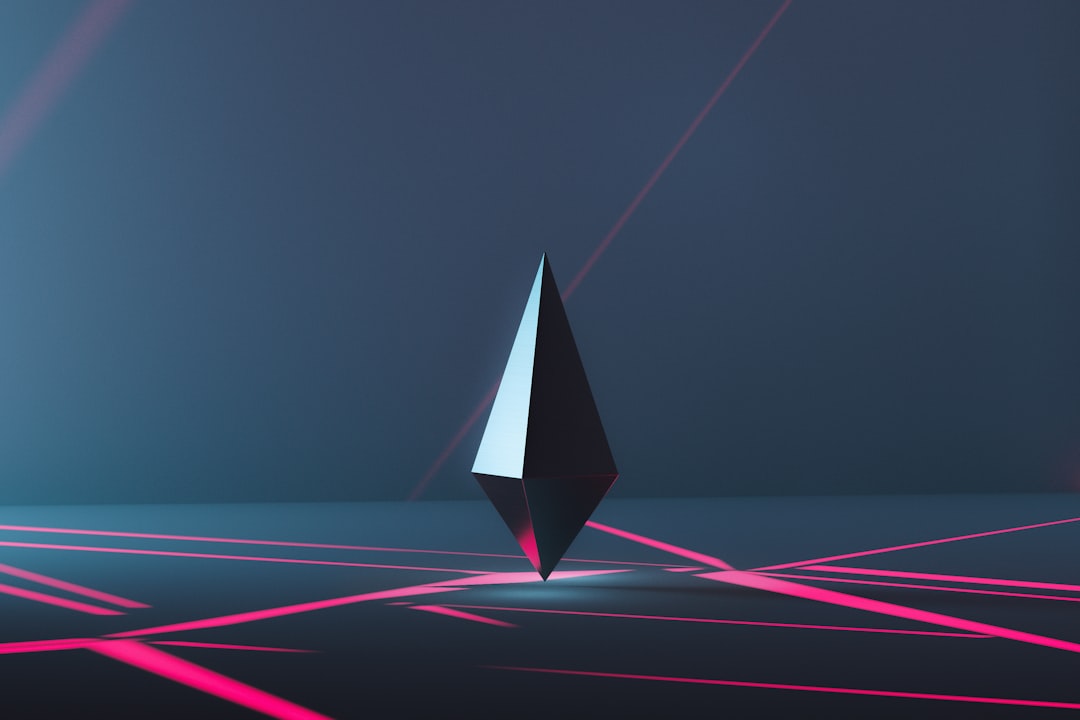In recent years, Non-Fungible Tokens (NFTs) have gained significant attention in the art world. And for a good reason – they represent a new way for artists to monetize their digital creations. Put simply; NFTs are unique digital assets that exist as proof of ownership, authenticity, and scarcity of digital art, music, videos, and other online media.
While NFTs have been around since 2017, their recent popularity is due in part to celebrities and high-profile artists embracing NFTs as a way to showcase and sell their work. For instance, the auction of Beeple’s digital artwork at Christie’s auction house for $69 million has brought the concept of NFTs to the mainstream media.
The rising popularity of NFTs presents a significant shift in the art world, where physical art has traditionally been the most valuable and sought-after form of artwork. In this blog post, we are going to delve deeper into the pros and cons of NFTs, their potential as an investment, their impact on the democratization of art, the future of NFTs, potential drawbacks, and conclude with the overall impact of NFTs on the art world.
Digital vs Physical Art: The Pros and Cons of NFTs
Non-Fungible Tokens (NFTs) have been gaining popularity in the art world, primarily as a way for digital artists to monetize their work. But how do NFTs compare to physical art in terms of value, accessibility, and sustainability?
The Pros of NFTs:
- Increased Accessibility: NFTs provide artists with a platform to showcase their work to a wider audience, breaking down the barriers to entry in the traditional art world. This allows artists from all backgrounds and skill levels to gain recognition and monetize their work.
- Saving Space: One of the major advantages of NFTs is that they allow artists to create and sell their work without the need for a physical presence. This means that the artist doesn’t need to worry about storage or transport, which can be costly and time-consuming with physical art.
- Increased Value: NFTs create a unique digital asset that is one-of-a-kind, making it a valuable commodity that collectors are willing to pay a premium for. This creates an opportunity for digital artists to earn more than they might have been able to otherwise.
The Cons of NFTs:
- Lack of Tangibility: Despite the benefits of NFTs, there are some artists and collectors who still value the physicality of art. They believe that tangible art has a certain presence and impact that digital art cannot replicate.
- Environmental Concerns: Since NFTs are created using blockchain technology, there are concerns about the environmental impact. The energy consumption associated with the creation and trading of NFTs can have a negative effect on the environment.
- Ownership: While NFTs provide a way to authenticate ownership of digital art, there are still legal and ethical questions surrounding the ownership of NFTs. It remains to be seen how issues such as copyright infringement, theft, and fraud will be resolved in the world of NFTs.
Overall, NFTs have their advantages and disadvantages relative to traditional art mediums. While it is exciting to see digital art being recognized and valued, it is important to consider the impact and implications of this new form of art ownership and trading.
Increased Value: NFTs create a unique digital asset that is one-of-a-kind, making it a valuable commodity that collectors are willing to pay a premium for.
NFTs as an Investment: The Potential for High Financial Returns
NFTs, or non-fungible tokens, have taken the art world by storm in recent years thanks to their unique combination of blockchain technology and digital art. While the prospect of owning a one-of-a-kind piece of art is certainly attractive to many collectors, NFTs are becoming increasingly popular not only as a way to add to a digital art collection, but also as a potentially lucrative investment opportunity.
One key benefit of investing in NFTs is the potential for high financial returns. This is largely due to the fact that NFTs are not subject to the same limitations and regulations as traditional investment opportunities like stocks or real estate. While these assets are often subject to market fluctuations and other external factors that can negatively impact their value, NFTs are entirely independent. This means that the value of NFTs is largely determined by the whims of collectors and buyers, and can potentially skyrocket if demand for a particular piece is high.
Another potential benefit of investing in NFTs is the ease of entry into the art world. Historically, investing in fine art has been a pursuit reserved for the wealthy and well-connected, as securing physical artwork can be an expensive and exclusive process. However, NFTs allow for a more democratized approach to collecting and investing in art, as even those with a limited budget can participate in this new marketplace.
Of course, as with any investment opportunity, there are risks associated with NFTs as well. It’s important to approach NFT investing with caution, as the market is still relatively new and untested. Additionally, there may be legal and regulatory hurdles to overcome as NFTs become more mainstream, which could negatively impact the value of these tokens in the future.
Despite these risks, the potential financial rewards of investing in NFTs are too significant to ignore. As the market continues to evolve and expand, more and more investors are looking to add NFTs to their portfolios. Whether you’re a seasoned collector looking to diversify your holdings or a newcomer to the art market, NFTs represent a unique and exciting opportunity to invest in the future of digital art.
As the market continues to evolve and expand, more and more investors are looking to add NFTs to their portfolios.
The Democratization of Art: How NFTs Are Making the Art World More Inclusive
NFTs are not merely digital assets that can be bought, sold and traded. One of the key benefits of NFTs is that they can be used as a tool for democratizing the art world. Before NFTs, the art world heavily relied on gatekeepers, such as agents, galleries, and auction houses, to access buyers and investors. These gatekeepers had a significant influence on the artworks that were displayed, protected, and sold. They placed prices on the artworks, which often made them inaccessible to many people, and only a select few could reap the benefits of investing in them. However, NFTs are significantly disrupting this traditional model.
NFTs are enabling artists, creators, and collectors to directly engage with each other, without the need for middlemen. Artists can create and list their own digital artworks, and interested buyers can easily browse and purchase the pieces they want. This not only provides new opportunities for underrepresented artists, but it also helps to create a more diverse and inclusive art market.
Moreover, NFTs are providing a means for artists to guarantee authenticity and provenance, which is notoriously difficult with traditional physical artworks. NFTs use blockchain technology to create a transparent and immutable ledger that tracks the ownership and history of the digital assets. This allows artists to maintain control over their intellectual property and ensures that collectors and buyers can verify the authenticity of their purchase.
Furthermore, NFTs are also empowering collectors by giving them more control than ever before. With NFTs, collectors can purchase artworks from all over the world, providing access to a larger range of works than ever before. They can also participate in auctions and other activities previously only open to institutional investors, thereby democratizing the market and allowing for greater participation by smaller investors.
In conclusion, NFTs are disrupting the traditional art world by making it more inclusive and accessible. The use of blockchain technology ensures transparency and authenticity while enabling artists and buyers to interact directly. The democratization of the art world that NFTs provide is a game-changer, and the implications for the future of art and investment are unparalleled.
They can also participate in auctions and other activities previously only open to institutional investors, thereby democratizing the market and allowing for greater participation by smaller investors.
The Future of NFTs: The Potential for Growth and Change
The world of NFTs is constantly evolving, and there is no telling what the future holds. Some experts believe that NFTs will continue to grow in popularity, becoming an integral part of the art world and even expanding beyond it. Others feel that NFTs are simply a passing trend and that their popularity will die down over time.
One thing is for sure, however: the technology behind NFTs is rapidly advancing. As more artists and creators experiment with the medium, we can expect to see new applications for NFTs beyond just digital artwork. In fact, some companies are already using NFTs to sell virtual real estate and virtual items within video games.
Additionally, as the demand for NFTs grows, we can expect to see more platforms and marketplaces popping up to support the industry. These platforms will likely offer new ways for creators to showcase their work, connect with buyers and collectors, and even monetize their social media channels.
It is also possible that NFTs could become a more mainstream investment opportunity, with investors buying and selling digital assets just like they would with stocks or real estate. While there is currently a great deal of speculation surrounding the financial potential of NFTs, many experts believe that they have the potential to offer high returns for savvy investors.
Of course, with any new technology, there are always potential drawbacks to consider. One major concern with NFTs is their environmental impact, as the process of minting, buying, and selling these digital assets can consume a significant amount of energy. Additionally, there are concerns over the legitimacy and value of some NFTs, as well as the potential for fraud within the market.
Despite these challenges, however, the potential for growth and change within the NFT space is undeniable. As the technology continues to evolve and become more widely adopted, we can expect to see new and exciting applications for NFTs that we can’t even imagine yet. The future of NFTs is bright, and it’s an exciting time to be a part of this emerging industry.
It is also possible that NFTs could become a more mainstream investment opportunity, with investors buying and selling digital assets just like they would with stocks or real estate.
Potential Drawbacks: The Possible Negative Impact of NFTs on the Environment
NFTs have been the subject of much excitement and debate in recent years, with many touting them as a revolutionary new way to buy, sell, and collect digital artwork. While NFTs certainly have their benefits, including the potential for artists to earn more money and the ability to authenticate and prove ownership of digital art, there are also some concerns about the environmental impact of NFTs.
One of the biggest concerns is the fact that creating and buying NFTs requires a significant amount of energy. This is because NFTs use blockchain technology, which requires a lot of computing power to operate. The process of creating an NFT involves “minting” a unique token on a blockchain, which involves solving complex mathematical equations. This process requires a lot of energy and computing power, which can contribute to climate change.
Another potential issue with NFTs is the fact that they require a lot of storage space. Each NFT is essentially a digital file, and these files can be quite large, especially if they contain video or other rich media. This means that the more NFTs that are created, the more storage space is needed to store them all. This can have an impact on the environment, as creating and running data centers that store all this information requires a lot of energy.
Finally, there is also the issue of e-waste to consider. As with any electronic device, NFTs have a limited lifespan and will eventually need to be replaced or upgraded. This can lead to a buildup of electronic waste, which can have a significant impact on the environment.
Overall, while NFTs certainly have their benefits, it’s important to consider the potential environmental impact of these digital tokens. As the popularity of NFTs continues to grow, it will be important for artists and collectors alike to take steps to mitigate these environmental concerns and ensure that NFTs are developed and used in a sustainable way.
Potential Drawbacks: The Possible Negative Impact of NFTs on the Environment
NFTs have been the subject of much excitement and debate in recent years, with many touting them as a revolutionary new way to buy, sell, and collect digital artwork.
Conclusion: The Impact of NFTs on the Art World and Their Potential for the Future
As we’ve explored throughout this blog post, non-fungible tokens (NFTs) have gained immense popularity in recent years. The unique properties of NFTs, such as their ability to provide proof of ownership and authenticity in the digital world, have made them a game-changer in the art industry.
NFTs have enabled artists to reach a wider audience and receive fair compensation for their work, which was often difficult to track and monetize in the traditional art world. Furthermore, the potential for high financial returns has attracted investors to enter the art market, creating new opportunities for growth and innovation.
It’s clear that NFTs have a significant impact on the democratization of art, making the art world more accessible and inclusive to a diverse range of artists and collectors. The future of NFTs is bright, as we’re likely to see more developments in how they’re used and integrated into the art industry.
However, with any emerging technology, there are potential drawbacks to consider, such as the environmental impact of NFTs. As the demand for NFTs has grown, there has been an increase in energy consumption required to generate them, leading to concerns about their sustainability.
In conclusion, NFTs are a powerful tool for artists and collectors. They offer more opportunities for expressing creativity, expanding the reach of artworks, and generating revenue. Despite the potential drawbacks, the future of NFTs looks promising, and it will be fascinating to see how they continue to transform the art world in the years to come.





